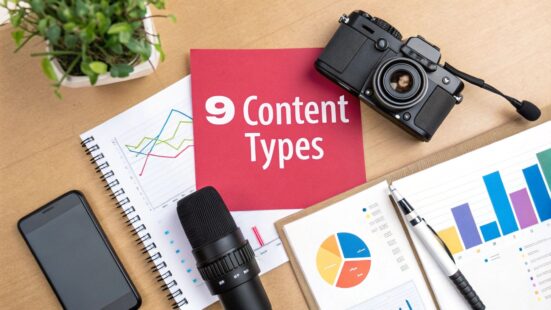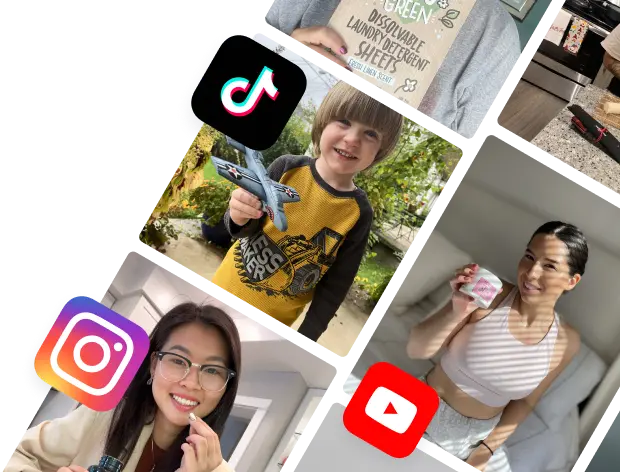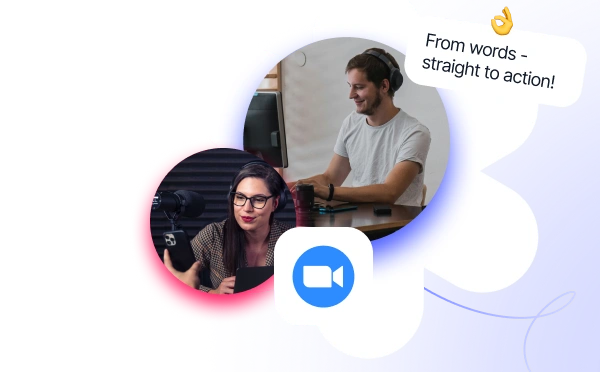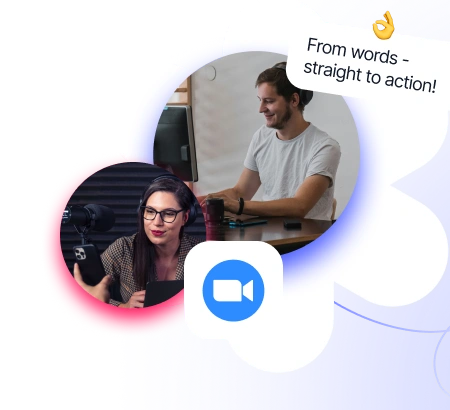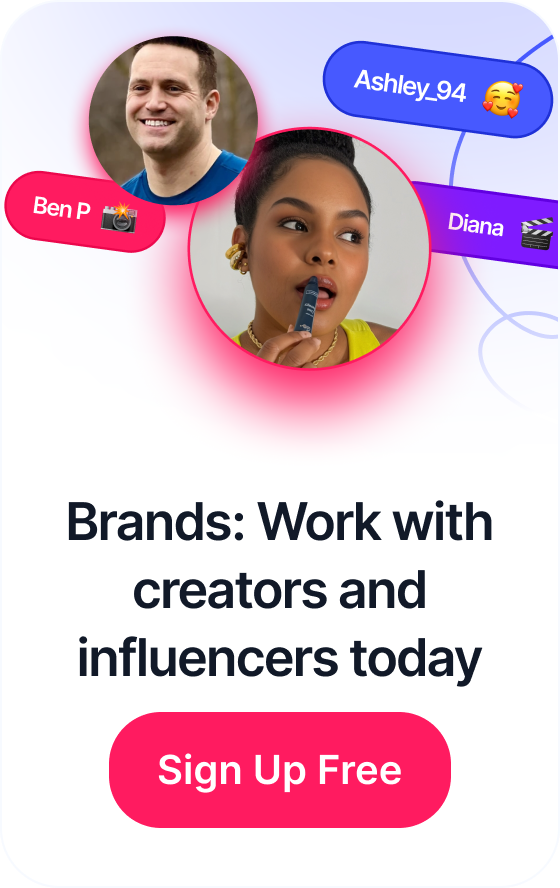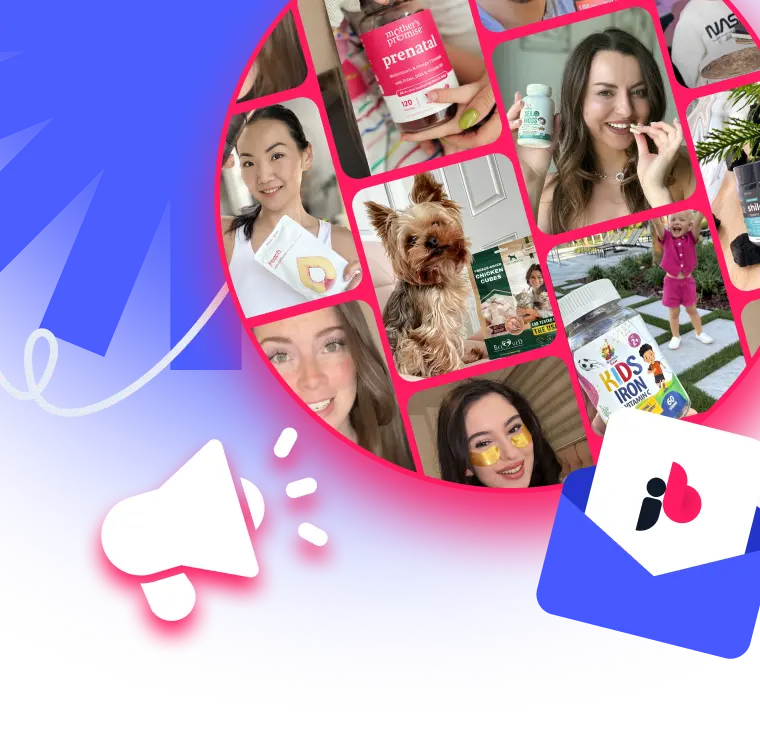 JoinBrands’ Creator Masterclass Live #3: The UGC Trends That Defined 2025 and What to Expect in 2026
JoinBrands’ Creator Masterclass Live #3: The UGC Trends That Defined 2025 and What to Expect in 2026
In the ever-evolving digital landscape of 2025, a one-size-fits-all approach to social media no longer cuts it. The key to capturing attention, fostering community, and driving growth lies in a diversified content strategy. Understanding the different types of content for social media is the first step toward building a powerful and engaging online presence that converts. This guide breaks down the nine most effective content formats available to marketers today.
We will move beyond surface-level definitions to provide actionable insights, expert tips, and real-world examples for each content type. You will learn not just what each format is, but why it works and how to implement it effectively. We'll explore the strategic purpose behind each one, from the viral potential of short-form video to the trust-building power of User-Generated Content (UGC) and the community-building aspect of live streaming. As part of your strategic content blueprint, exploring a variety of social media content ideas can inspire fresh and engaging posts that resonate with your specific audience.
This comprehensive list is designed to be your go-to resource for planning, creating, and executing a dynamic social media plan. Whether you're a startup founder launching a new product or an established brand manager looking to deepen customer relationships, mastering these content types is essential. This blueprint will equip you to connect with your audience on every major platform, turning passive scrollers into loyal advocates for your brand. Let's dive into the formats that will define social media success.
Table of Contents
1. Short-Form Video Content
Short-form video is arguably the most dominant of all types of content for social media today. This format consists of brief, vertical videos, typically ranging from 15 to 90 seconds, designed specifically for mobile-first platforms like TikTok, Instagram Reels, and YouTube Shorts. Its power lies in its ability to deliver entertaining, educational, or inspirational messages in a highly digestible and engaging package, perfectly suited for modern, fast-scrolling audiences.
The primary goal is to capture attention immediately and sustain it through fast-paced editing, trending audio, and authentic, human-centric storytelling. Brands leverage this format to showcase personality, go behind the scenes, and build community in ways polished, long-form content cannot.
Why This Format Works
This content type thrives because it taps directly into user behavior on mobile devices. The vertical orientation fills the entire screen, creating an immersive experience. The short duration respects the user's limited attention span, making it more likely they will watch a video to completion, a key signal to platform algorithms.
Key Insight: Short-form video's success is rooted in its low barrier to entry for creators and its high engagement potential with viewers. It prioritizes authenticity and creativity over high production value, allowing brands of all sizes to connect with audiences effectively.
Actionable Implementation Strategy
- Hook Within Three Seconds: Start with a compelling visual, a provocative question, or a surprising statement. Your opening is critical to stopping the scroll.
- Leverage Trending Audio: Incorporate trending sounds strategically, but ensure they align with your brand's voice. Don't force a trend that doesn't fit.
- Prioritize Accessibility: Add on-screen text or captions. Research shows up to 85% of social media videos are watched without sound, making captions essential for message delivery.
- Build Content Pillars: Don't just sell. Create a content mix that includes educational tips (how-tos), entertainment (behind-the-scenes), and inspirational stories (customer testimonials). For instance, Gymshark excels with quick workout tutorials, while Duolingo uses its mascot in comedic, trend-driven skits.
- Encourage Collaboration: Partnering with creators can amplify your reach and lend authenticity to your message. These partnerships are a powerful tool for generating user-generated content and tapping into new audiences. Learning how to effectively collaborate on platforms like TikTok can significantly boost your short-form video strategy.
2. Carousel Posts
Carousel posts are multi-slide posts that users swipe through, allowing for deeper storytelling and information sharing within a single, interactive unit. This format is one of the most versatile types of content for social media, blending the visual impact of a single image with the depth of a long-form article. Platforms like Instagram and LinkedIn have made carousels a go-to for delivering educational guides, product showcases, and compelling narratives.
Their power lies in the ability to break down complex topics into digestible, bite-sized chunks. By encouraging users to swipe, carousels increase engagement time and signal strong interest to platform algorithms, often leading to greater reach than a standard image post.
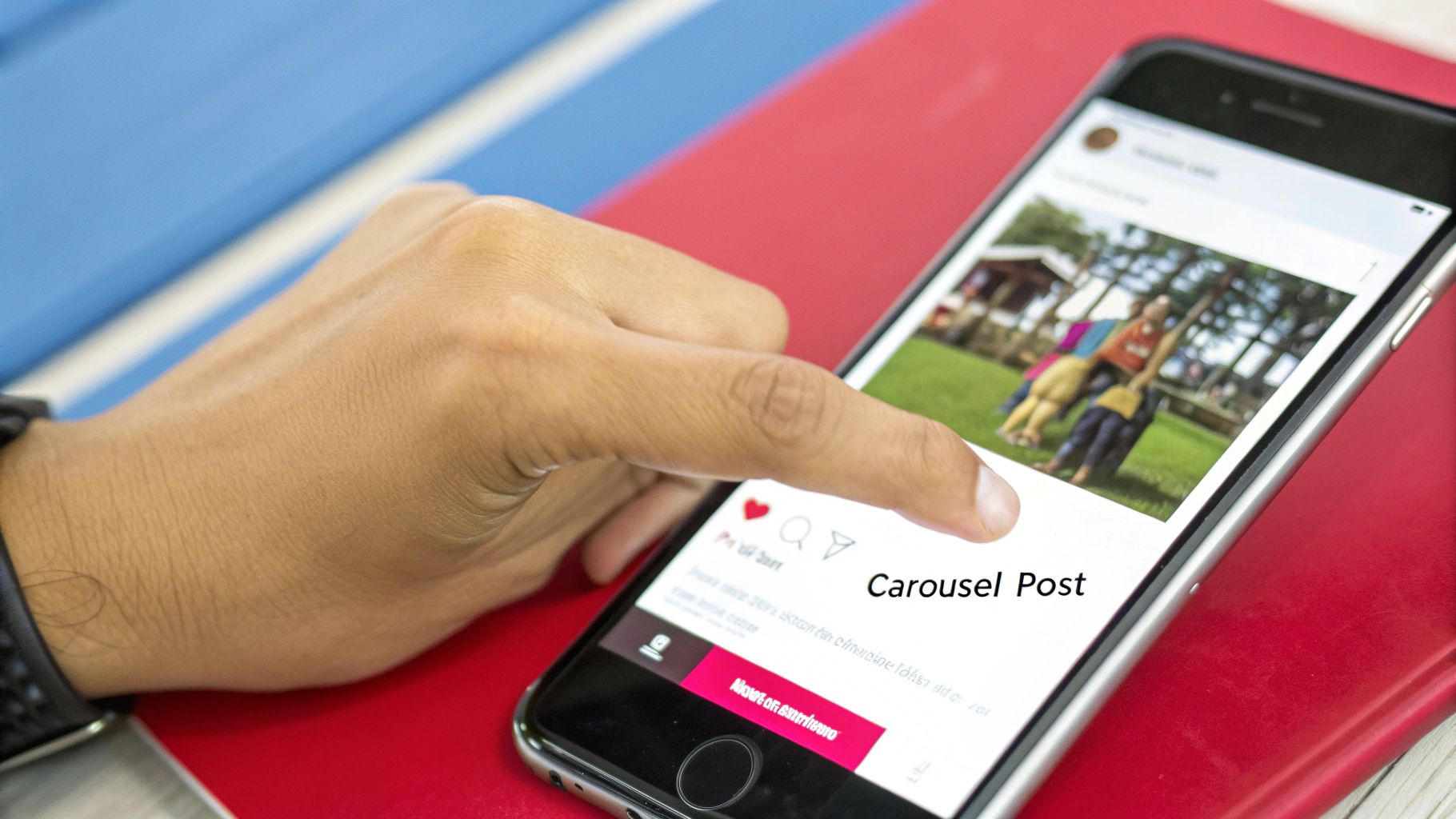
Why This Format Works
This content type succeeds because it transforms passive scrolling into an active, engaging experience. The "swipe to see more" mechanic piques curiosity and encourages users to spend more time with your content. This extended dwell time is a valuable metric that social media platforms interpret as high-quality, relevant content, often rewarding it with increased visibility.
Carousels are also highly "savable." When you provide significant value, like a step-by-step guide or a list of tips, users are more likely to save the post for future reference, further boosting its performance and longevity.
Key Insight: Carousel posts excel by packaging high-value information in an interactive and visually appealing format. They satisfy the audience's desire for both quick visual content and in-depth knowledge, making them a powerful tool for establishing authority and building trust.
Actionable Implementation Strategy
- Create a Compelling Cover Slide: Your first slide must act as a strong headline and hook. It should clearly state the value proposition, telling the user exactly why they should swipe through the remaining slides.
- Guide the User Visually: Use design elements like arrows, numbers (e.g., "1/10"), or graphics that flow from one slide to the next. This creates a cohesive narrative and encourages completion.
- Balance Text and Visuals: Each slide should be clean and uncluttered. Use a large, readable font and pair concise text with relevant icons, images, or graphics to maintain visual interest and improve comprehension.
- End with a Strong Call-to-Action (CTA): The final slide is prime real estate. Use it to ask a question, encourage a save or share, direct users to a link in your bio, or summarize the key takeaways. HubSpot, for example, often uses its final slide to prompt discussion in the comments.
- Repurpose Existing Content: Turn blog posts, case studies, or webinar snippets into engaging carousels. This strategy allows you to get more mileage out of your long-form content by adapting it for a different audience and consumption style.
3. Live Streaming
Live streaming is a powerful and immersive format among the various types of content for social media. It involves broadcasting real-time, unedited video directly to an audience on platforms like Instagram Live, Facebook Live, YouTube Live, and TikTok Live. This format's unique strength is its rawness and immediacy, fostering a direct, unfiltered connection between a brand and its followers that pre-recorded content cannot replicate.
The primary goal of live streaming is to create a shared, interactive experience. By breaking down the barrier between creator and consumer, brands can host live Q&As, exclusive behind-the-scenes tours, product launches, or educational workshops. This fosters community, builds trust through transparency, and creates a sense of urgency and exclusivity.
Why This Format Works
This content type thrives on authenticity and real-time engagement. Viewers feel like active participants rather than passive observers, which deepens their connection to the brand. The unscripted nature makes the interaction feel genuine, and features like live comments and reactions allow brands to get instant feedback, answer questions on the spot, and make their audience feel seen and heard.
Key Insight: Live streaming’s value lies in its ability to create ephemeral, community-centric moments. The fear of missing out (FOMO) drives tune-in, while the direct interaction builds a level of brand loyalty that is difficult to achieve through other content formats.
Actionable Implementation Strategy
- Promote in Advance: Announce your live stream 24-48 hours beforehand across all your channels. Use countdown stickers on Instagram Stories to build anticipation and remind followers.
- Have a Clear Purpose: Define a clear goal for your stream. Are you launching a product, answering customer questions, or hosting a tutorial? A structured plan, like Sephora’s makeup artist tutorials, keeps the broadcast focused.
- Acknowledge Viewers: Greet viewers by name as they join and respond to their comments in real time. This simple act of recognition makes your audience feel valued and encourages further participation.
- Encourage Engagement: Actively ask for questions, run polls, and prompt viewers to use specific reactions. This keeps the energy high and the audience invested in the broadcast.
- Repurpose the Content: After the stream ends, save the recording. You can then edit it down into shorter clips for Reels or Shorts, a quote graphic for your feed, or a blog post summarizing the key takeaways. For a deep dive into platform specifics, understanding the essentials of going live on TikTok can provide a great starting point.
4. User-Generated Content (UGC)
User-Generated Content (UGC) is one of the most powerful types of content for social media because it flips the script, turning customers into brand storytellers. This format consists of any content, text, videos, images, or reviews, created by individuals rather than brands. It serves as authentic social proof, showcasing real people using and loving a product or service.
Its primary goal is to build trust and community by leveraging genuine customer experiences. Brands like GoPro, which built its empire on customer-shot adventure footage, and Apple, with its iconic #ShotOniPhone campaign, have demonstrated UGC's ability to create a powerful, self-sustaining marketing engine that feels less like advertising and more like a shared movement.
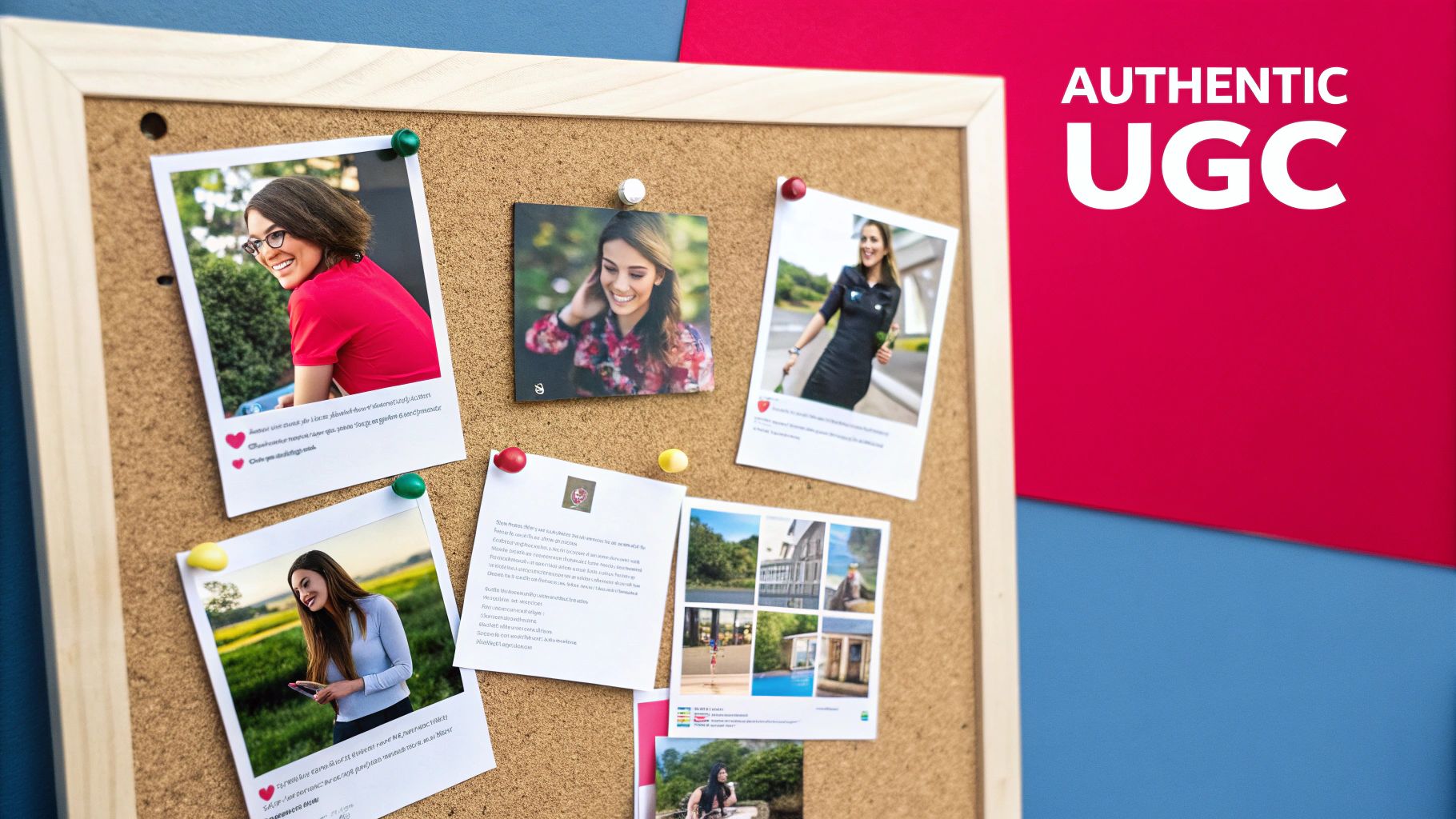
Why This Format Works
This content type thrives because it taps directly into the consumer's trust in other consumers. Nielsen reports that 92% of people trust recommendations from individuals, even strangers, over brand advertising. UGC provides that peer-to-peer validation at scale, showing potential buyers how a product fits into real-world scenarios, not just staged photoshoots.
Key Insight: UGC's effectiveness is rooted in its authenticity and relatability. It shifts the marketing narrative from "what we say about us" to "what they say about us," which is inherently more credible and persuasive for new audiences.
Actionable Implementation Strategy
- Create a Branded Hashtag: Launch a simple, memorable hashtag to encourage submissions and make it easy to track and discover content. Starbucks' annual #RedCupContest is a classic example of this in action.
- Always Ask for Permission and Give Credit: Before reposting any user's content, obtain explicit permission and always tag their handle in the caption. This builds goodwill and respects the creator's ownership.
- Incentivize Participation: Encourage submissions by running contests, offering discounts, or featuring the best content on your official channels. This gives your community a clear reason to participate.
- Set Clear Guidelines: Make it easy for users to contribute by providing clear instructions on what you're looking for. Define the theme, style, or specific product you want to be featured. To dive deeper into leveraging authentic contributions from your audience, explore effective user-generated content strategies for events.
- Integrate Across Channels: Don't limit UGC to just one platform. Repurpose top-performing customer photos and videos in email newsletters, on product pages, and in paid ad campaigns to maximize their impact. Finding creators to help seed this content can also be a challenge, but resources are available for brands wondering where to find UGC creators to kickstart their campaigns.
5. Stories and Ephemeral Content
Stories and ephemeral content are full-screen, vertical posts that disappear after 24 hours. Pioneered by Snapchat and popularized by Instagram, this format is one of the most powerful types of content for social media for fostering a sense of urgency and encouraging daily check-ins from your audience. Its temporary nature creates a low-pressure environment for both creators and viewers, inviting more authentic, less-polished content.
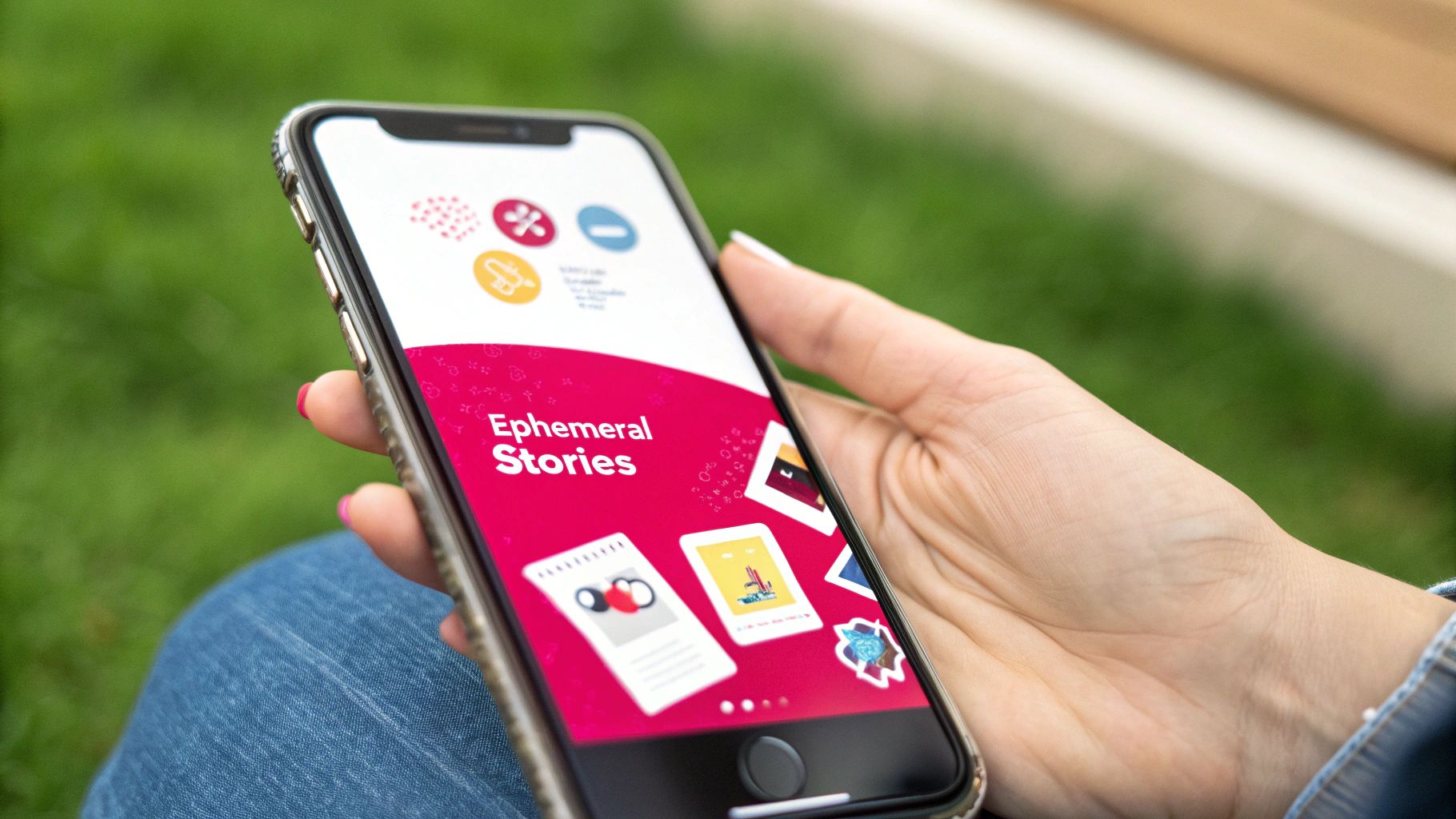
The primary goal of Stories is to provide a casual, behind-the-scenes look into your brand. This could be anything from employee takeovers and step-by-step tutorials to breaking news updates and exclusive flash sales. This format builds a stronger, more personal connection with followers by showing the human side of a business, moving beyond the curated perfection of a main feed.
Why This Format Works
This content type thrives on the psychological principle of FOMO (Fear of Missing Out). The 24-hour lifespan motivates users to view content before it's gone, driving frequent and repeated engagement. Interactive features like polls, quizzes, Q&As, and countdown timers transform passive viewing into active participation, providing valuable feedback and boosting algorithm performance.
Key Insight: Ephemeral content's strength lies in its ability to create an intimate and immediate communication channel. It feels less like an advertisement and more like a direct conversation, making it ideal for building community loyalty and gathering real-time audience insights.
Actionable Implementation Strategy
- Use Interactive Stickers: Actively use polls, question boxes, quizzes, and sliders. These features can dramatically increase engagement by turning viewers into participants. For example, a real estate agent could use a poll to ask, "Which kitchen do you prefer: A or B?" during a virtual tour.
- Create Story-Exclusive Offers: Drive urgency and reward your most engaged followers by running 24-hour flash sales or sharing discount codes available only through Stories.
- Go Behind the Scenes (BTS): Show your audience the process, people, and culture behind your brand. Glossier excels at this with daily product tutorials and unfiltered glimpses into their office life, making the brand feel more accessible.
- Create Story Highlights: Extend the life of your most valuable ephemeral content by saving it to Highlights on your profile. Organize these into categories like "FAQs," "Testimonials," or "How-To's" to serve as a permanent resource for new visitors.
- Mix Content Types: Keep your audience engaged by varying your Story content. Aim for a mix of educational tips, entertainment (like a day-in-the-life series from Nike), user-generated content, and promotional posts to maintain interest.
6. Long-Form Video Content
While short-form video dominates scroll feeds, long-form video remains one of the most powerful types of content for social media for building authority and deep audience connection. This format includes videos that typically exceed five minutes, hosted primarily on platforms like YouTube, and is designed for in-depth tutorials, comprehensive educational series, detailed product reviews, or immersive brand storytelling. Its strength is in providing substantial value that shorter formats cannot.
The goal of long-form video is to capture and hold a viewer's attention for an extended period, allowing brands to move beyond quick entertainment and establish themselves as experts. Creators like Ali Abdaal use it for productivity tutorials, while brands like Patagonia create documentary-style content that reinforces their mission and builds lasting loyalty.
Why This Format Works
This content type succeeds because it caters to an audience actively seeking in-depth information or entertainment, rather than passively scrolling. It allows for complex narratives, detailed explanations, and a stronger emotional connection. High watch time and audience retention are powerful signals to platforms like YouTube, boosting a video's visibility and reach over time.
Key Insight: Long-form video's value lies in its ability to build trust and authority. By investing the time to create substantive content, you signal a commitment to your audience's education and interests, which fosters a much stronger and more loyal community than fleeting trends can.
Actionable Implementation Strategy
- Hook with a Value Proposition: Use the first 15-30 seconds to clearly state what the viewer will gain from watching. This could be a problem you will solve or a compelling story you will tell.
- Invest in High-Quality Audio: Viewers will forgive mediocre video quality but are quick to click away from poor audio. A clear, crisp microphone is a non-negotiable investment.
- Use Pattern Interrupts: Maintain engagement by changing the camera angle, adding B-roll footage, using on-screen text graphics, or shifting topics every 60-90 seconds to reset viewer attention.
- Optimize for Discovery: Craft a compelling, keyword-rich title and an eye-catching thumbnail to maximize your click-through rate. Use video chapters to break down the content, which improves user experience and can enhance SEO by appearing in Google search results.
- Guide the Next Step: Always end with a clear call-to-action (CTA). Whether it’s subscribing, watching another video, or visiting your website, tell your audience exactly what to do next.
7. Static Image Posts with Captions
While video often steals the spotlight, the static image post is one of the most foundational and enduring types of content for social media. This format pairs a high-quality photograph, graphic, or illustration with a well-crafted text caption. Its strength is in its simplicity and ability to convey a powerful message, aesthetic, or story in a single, immediate glance.
This format is perfect for building a strong brand identity, showcasing products in detail, and telling stories that resonate deeply. Brands like National Geographic use breathtaking photography to transport their audience, while Humans of New York combines simple portraits with profound, long-form captions to create an emotional connection. This classic format remains a cornerstone of a balanced content strategy.
Why This Format Works
Static images are incredibly effective because they are "thumb-stopping" by nature. A visually striking photograph or a bold graphic can halt a user's scroll instantly, providing a moment of focus in a fast-moving feed. Unlike video, which requires a time commitment, an image delivers its core message almost instantaneously. The caption then provides the context, depth, and call to action.
Key Insight: The power of a static image post lies in the synergy between the visual and the text. The image captures attention, while the caption engages the mind and encourages action, making it a highly efficient and versatile content format.
Actionable Implementation Strategy
- Establish a Cohesive Visual Identity: Maintain a consistent aesthetic through a defined color palette, filter usage, and composition style. This makes your brand instantly recognizable. For example, minimalist brands like Everlane use clean, simple product shots to reinforce their brand ethos.
- Write Captions That Add Value: Use the caption to tell a story, ask a question, or provide context that the image alone cannot. Front-load the most important information before the "more" cutoff to hook readers immediately.
- Optimize for Visual Impact: Use high-contrast colors, leading lines, and a clear focal point to make your image stand out. Ensure you are using the optimal dimensions for each platform to avoid awkward cropping and maintain quality.
- Include a Clear Call-to-Action (CTA): Guide your audience on what to do next. Ask them to comment with their thoughts, visit the link in your bio, tag a friend, or save the post for later. A clear CTA transforms passive viewers into active participants.
- Use Hashtags Strategically: Research and use a mix of 3-5 relevant niche and broad hashtags to increase discoverability. Place them at the end of the caption or in the first comment to keep the caption clean and focused on the core message.
8. Memes and Trendjacking Content
Memes and trendjacking are among the most culturally relevant types of content for social media, allowing brands to join conversations already happening online. This format involves adapting popular internet memes, pop culture moments, or viral trends to your brand’s messaging. Instead of creating a conversation from scratch, you cleverly insert your brand into an existing one, demonstrating personality and relatability.
The primary goal is to capitalize on the massive, pre-existing engagement of a trend. Brands like Wendy's, with its witty roasts, or Duolingo, with its unhinged mascot memes, use this format to appear more human, build community through shared humor, and generate highly shareable content that spreads organically.
Why This Format Works
This content type thrives on timeliness and relatability. By participating in a current trend, a brand signals that it is modern, aware, and part of the same online culture as its audience. This creates an immediate connection that traditional advertising struggles to achieve. When executed well, it feels less like a marketing message and more like an authentic contribution to a community joke.
Key Insight: The power of memes and trendjacking lies in their ability to borrow cultural momentum. Success depends on speed, cultural understanding, and a unique brand twist, allowing a brand to generate significant reach and engagement with relatively low production effort.
Actionable Implementation Strategy
- Act with Urgency: Trends have a very short lifespan, often just 24-48 hours. Have a streamlined approval process in place to capitalize on moments before they become outdated.
- Understand the Context: Before using a meme, fully understand its origin and cultural meaning. Misinterpreting a trend can lead to embarrassing mistakes that damage brand perception.
- Add a Unique Brand Angle: Don't just copy and paste a trend. Add a perspective, joke, or visual that is unique to your brand. For example, when the "Bernie Sanders mittens" meme went viral, brands photoshopped Bernie into their own settings, from storefronts to product ads.
- Know Your Audience's Humor: What resonates with a Gen Z audience on TikTok may not land with a B2B audience on LinkedIn. Tailor your participation to the specific platform and demographic you are targeting.
- Stay selective: Not every trend is right for your brand. Avoid participating in sensitive, controversial, or polarizing topics. If a trend doesn't align naturally with your brand's voice or values, it’s better to sit it out.
9. Educational and How-To Content
Educational content is one of the most powerful types of content for social media for building authority and providing direct value to your audience. This format focuses on teaching a skill, solving a specific problem, or explaining a complex topic through clear, step-by-step guidance. It positions your brand as a helpful expert, not just a seller, fostering trust and long-term loyalty.
The primary goal is to empower your audience with actionable knowledge they can apply immediately. Brands like HubSpot Academy use this to dominate the marketing education space with in-depth tutorials, while financial advisors use it to demystify complex investment concepts, building credibility with potential clients.
Why This Format Works
This content type succeeds because it directly addresses a user's intent to learn and improve. People actively search for solutions on social media, and by providing the answer, you create a positive and memorable brand interaction. It shifts the dynamic from a transactional one to a relational one, where your brand becomes a go-to resource.
Key Insight: Educational content's value lies in its ability to generate qualified leads and build a loyal community. When you consistently solve your audience's problems for free, they are far more likely to trust you and pay for your solutions when the time comes.
Actionable Implementation Strategy
- Start with a Problem: Frame your content around a common pain point or question your target audience has. A title like "Three Common Mistakes to Avoid When…" is more compelling than "Tips for…".
- Break It Down: Deconstruct complex information into simple, digestible steps. Use numbered lists, short video clips, or carousel posts to guide users through a process without overwhelming them.
- Use Visuals for Clarity: Show, don't just tell. Use screen recordings for software tutorials, diagrams for complex concepts, or video demonstrations for physical tasks, like a fitness trainer correcting workout form.
- Create Comprehensive Series: Turn a broad topic into a multi-part series. This encourages follow-up engagement and allows you to explore subjects in greater depth, establishing you as a thought leader.
- Provide Tangible Resources: Enhance your educational content by offering downloadable templates, checklists, or worksheets. This provides immediate value and serves as an effective lead generation tool. For example, a marketing agency could offer a free content calendar template alongside a video on social media planning.
Content Type Comparison of Top 9 Social Media Formats
| Content Type | Implementation Complexity 🔄 | Resource Requirements ⚡ | Expected Outcomes 📊 | Ideal Use Cases 💡 | Key Advantages ⭐ |
|---|---|---|---|---|---|
| Short-Form Video Content | Medium (requires consistent posting and editing) 🔄🔄 | Moderate (basic video tools, trends monitoring) ⚡⚡ | High engagement and reach 📊📊 | Quick entertainment, education, brand awareness 💡 | Maximum reach, virality, mobile optimized ⭐⭐ |
| Carousel Posts | High (design and planning for multiple slides) 🔄🔄🔄 | Moderate to High (graphic design, copywriting) ⚡⚡ | Increased time spent, saves, shares 📊📊 | Tutorials, storytelling, product showcases 💡 | Educational depth, swipe engagement, versatile ⭐⭐ |
| Live Streaming | High (real-time interaction, prep needed) 🔄🔄🔄 | Moderate (equipment, stable internet) ⚡⚡ | Builds strong community, trust, and immediacy 📊📊 | Q&A, product launches, events, tutorials 💡 | Authenticity, direct engagement, FOMO effect ⭐⭐ |
| User-Generated Content (UGC) | Low to Medium (community-driven, requires management) 🔄 | Low (content is created by users) ⚡ | Builds trust, increases conversions 📊📊 | Social proof, community building, testimonials 💡 | High authenticity, cost-effective, conversion boost ⭐⭐ |
| Stories and Ephemeral Content | Medium (frequent creation, casual quality) 🔄🔄 | Low to Moderate (basic editing tools) ⚡⚡ | High daily engagement, urgency-driven 📊📊 | Time-sensitive updates, behind-the-scenes, quick promos 💡 | Frequent presence, interactive features, immediacy ⭐ |
| Long-Form Video Content | Very High (production, editing, scripting) 🔄🔄🔄🔄 | High (cameras, editing software, script prep) ⚡⚡⚡ | Builds authority, SEO, loyal audience 📊📊 | In-depth tutorials, storytelling, entertainment 💡 | Deep engagement, monetization potential, evergreen ⭐⭐ |
| Static Image Posts with Captions | Low (single image and caption) 🔄 | Low (photography/design skills required) ⚡ | Consistent brand visuals, moderate engagement 📊 | Brand aesthetic, storytelling, lifestyle content 💡 | Timeless format, easy to produce, universal compatibility ⭐ |
| Memes and Trendjacking Content | Low to Medium (quick creation, cultural knowledge) 🔄🔄 | Low (fast content creation) ⚡ | High virality and shareability 📊📊 | Cultural relevance, humor, brand personality 💡 | Viral potential, low cost, relatability ⭐⭐ |
| Educational and How-To Content | High (expertise and structured content required) 🔄🔄🔄 | Moderate to High (research, scripting, visuals) ⚡⚡ | Builds thought leadership, saves and shares 📊📊 | Skill-building, tutorials, problem solving 💡 | Authority building, evergreen value, high saves ⭐⭐ |
Building Your Perfect Content Mix: From Strategy to Execution
Navigating the diverse landscape of social media content can feel like learning a new language. After exploring the intricacies of nine distinct types of content for social media, from the viral potential of short-form video to the community-building power of User-Generated Content (UGC), one truth becomes clear: there is no single "best" format. The most successful brands are not masters of just one content type; they are fluent in many, strategically deploying each to achieve specific objectives.
Your journey from understanding these formats to mastering them begins with a strategic, intentional approach. Think of your content plan not as a rigid checklist but as a dynamic portfolio. The goal is to create a balanced mix that entertains, educates, inspires, and converts, keeping your audience engaged at every touchpoint.
Synthesizing Your Strategy: From Theory to Actionable Plan
The core takeaway is that each content type serves a unique purpose within your marketing ecosystem. Ephemeral Stories build daily rapport and offer behind-the-scenes authenticity, while polished carousel posts establish your brand as an industry authority. Live streams create urgent, interactive moments that foster deep connection, and well-timed memes demonstrate that your brand is culturally relevant and human.
Instead of trying to do everything at once, focus on creating a strategic content hierarchy.
Identify Your 'Pillar' Formats: Based on your brand identity, audience demographics, and primary business goals, select two or three core content types to master first. An e-commerce brand might prioritize UGC and short-form video to showcase products in real-world contexts. A B2B SaaS company, on the other hand, might lean heavily into educational carousels and long-form video tutorials.
Establish Your 'Supporting' Formats: Once your pillars are established and performing well, begin layering in other formats. These can be used less frequently but add variety and depth. If your pillars are educational, use memes for a touch of lightheartedness. If your core is entertaining video, use static images with thoughtful captions to share deeper brand stories.
Create a Content Cadence: Map out how these different formats will work together on a weekly or monthly basis. For example, a week might include one educational carousel, three authentic Stories, one piece of high-value UGC, and one trending short-form video. This cadence prevents audience fatigue and ensures you're hitting different psychological triggers.
The Power of a Blended Approach
The true magic happens when you blend these different types of content for social media to create a cohesive brand narrative. A successful product launch isn't just one announcement post; it's an orchestrated campaign. It could start with teaser Stories, follow with an educational carousel detailing product features, peak with a live stream Q&A session, and be sustained by a wave of authentic UGC from early adopters.
This integrated strategy transforms your social media presence from a simple broadcast channel into a vibrant community hub. It shows your audience that you understand their needs, respect their time, and are committed to providing value beyond just selling a product. Mastering this mix is what separates fleeting trends from lasting brand loyalty. It allows you to build authority, foster genuine relationships, and ultimately, drive sustainable growth. The path forward is not about perfection in every post but about consistent, strategic experimentation and a commitment to serving your audience with the right content, in the right format, at the right time.
Ready to supercharge your content strategy without the massive overhead of in-house production? JoinBrands connects you with a global network of vetted creators ready to produce high-performing UGC, short-form videos, and other authentic types of content for social media at scale. Stop struggling to keep up and start building your library of compelling, conversion-focused assets today by visiting JoinBrands.
